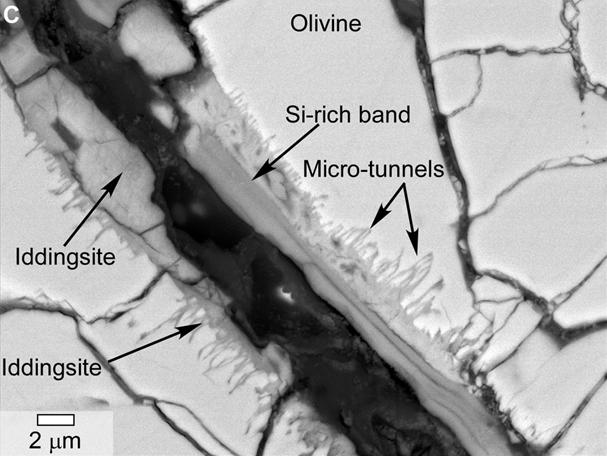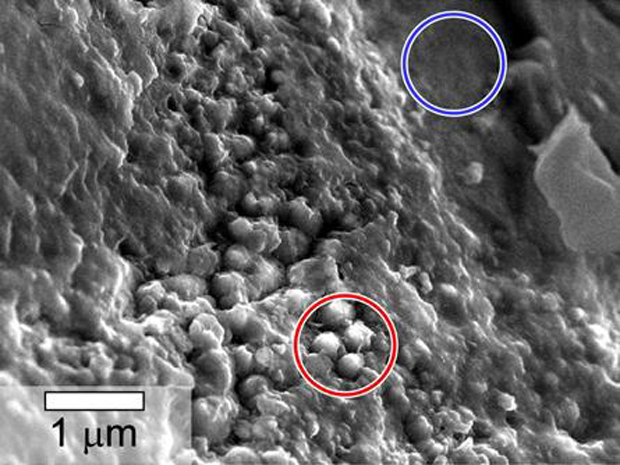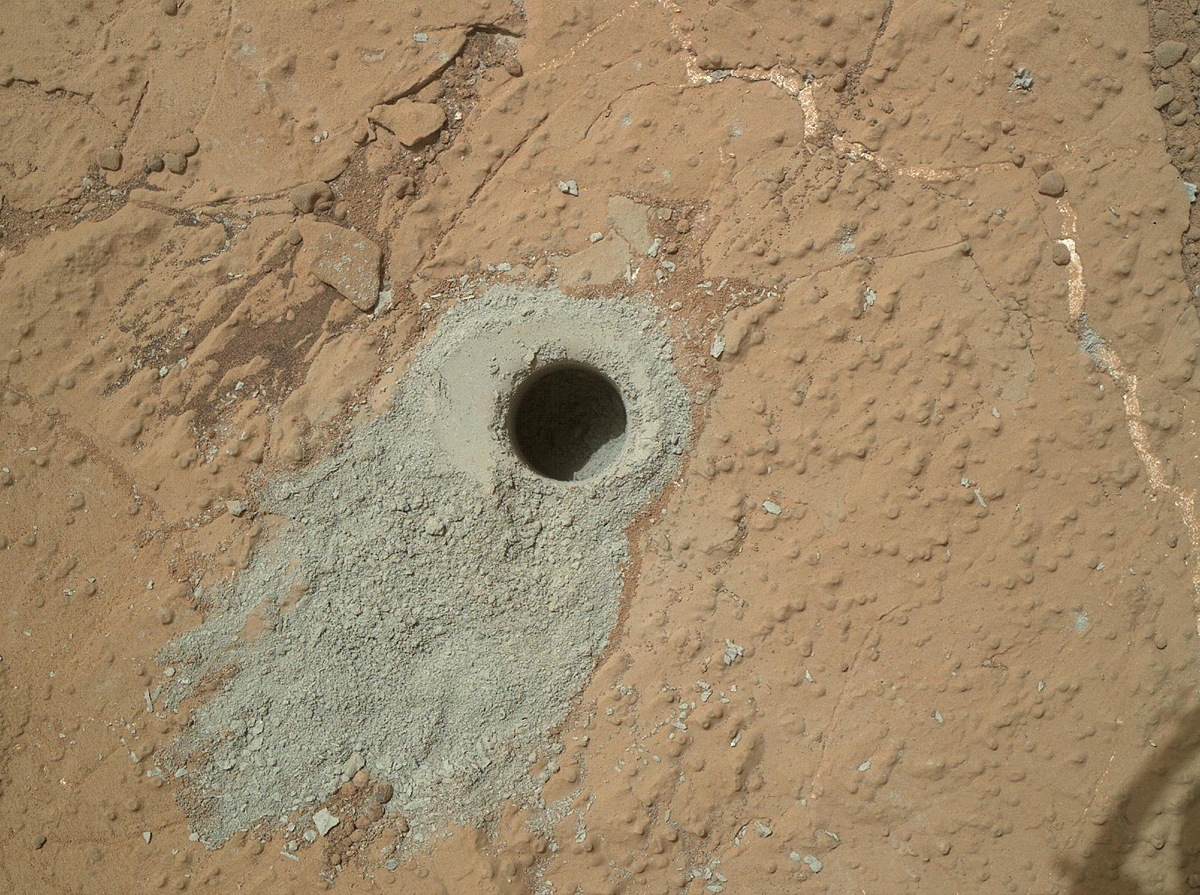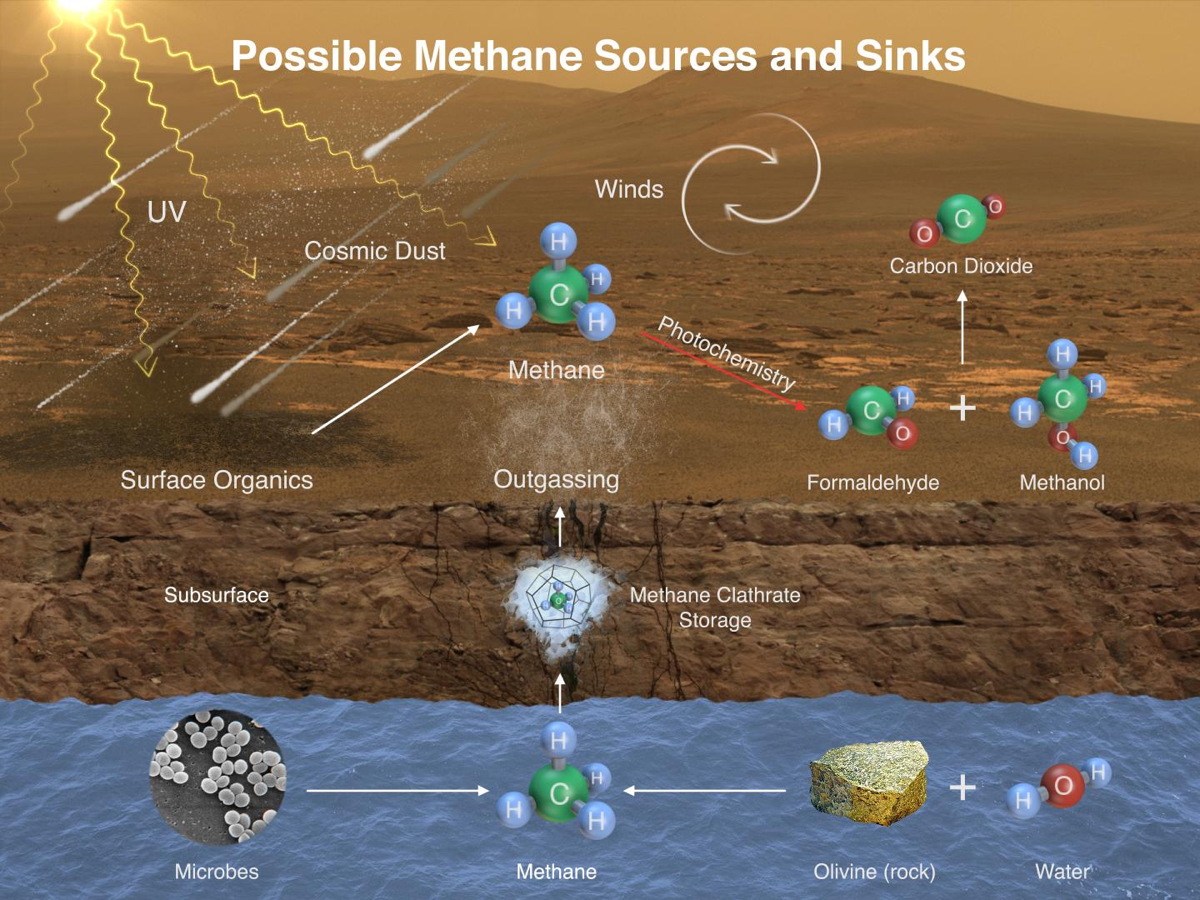The Search for Life on Mars (A Photo Timeline)
Mars Meteorite Yamato 000593 Tunnels

This scanning electron microscope image of a polished thin section of a meteorite from Mars shows tunnels and curved microtunnels - a feature similar to ones on Earth caused by microorganisms. The clay mineral iddingsite is present in this meteorite, named Yamato 000593, which was found in Antarctica in 2000 and identified as originating from Mars. The scale bar at lower left is 2 microns. [Read the Full Story Here]
Mars Meteorite Yamato 000593 Spheres

This scanning electron microscope image shows spheroidal features in a layer of iddingsite, a mineral formed by action of water, in the meteorite Yamato 000593 that came from Mars. An area with the spheres, circled in red, was found to have about twice as much carbon present as an area (circled in blue) without the spheres. [Read the Full Story Here]
'Cumberland' Target Drilled by Curiosity

NASA's Mars rover Curiosity drilled a circular hole into this rock target, "Cumberland," on May 19, 2013. [Read Curiosity Rover Finds Methane on Mars: What It Could Mean for Life.]
Possible Methane Sources and Sinks

This diagram depicts potential means by which methane might incorporate into Mars' atmosphere (sources) and disappear from the atmosphere (sinks). Image released Dec. 16, 2014. [Read Curiosity Rover Finds Methane on Mars: What It Could Mean for Life.]
Get the Space.com Newsletter
Breaking space news, the latest updates on rocket launches, skywatching events and more!
Join our Space Forums to keep talking space on the latest missions, night sky and more! And if you have a news tip, correction or comment, let us know at: community@space.com.

Clara Moskowitz is a science and space writer who joined the Space.com team in 2008 and served as Assistant Managing Editor from 2011 to 2013. Clara has a bachelor's degree in astronomy and physics from Wesleyan University, and a graduate certificate in science writing from the University of California, Santa Cruz. She covers everything from astronomy to human spaceflight and once aced a NASTAR suborbital spaceflight training program for space missions. Clara is currently Associate Editor of Scientific American. To see her latest project is, follow Clara on Twitter.









